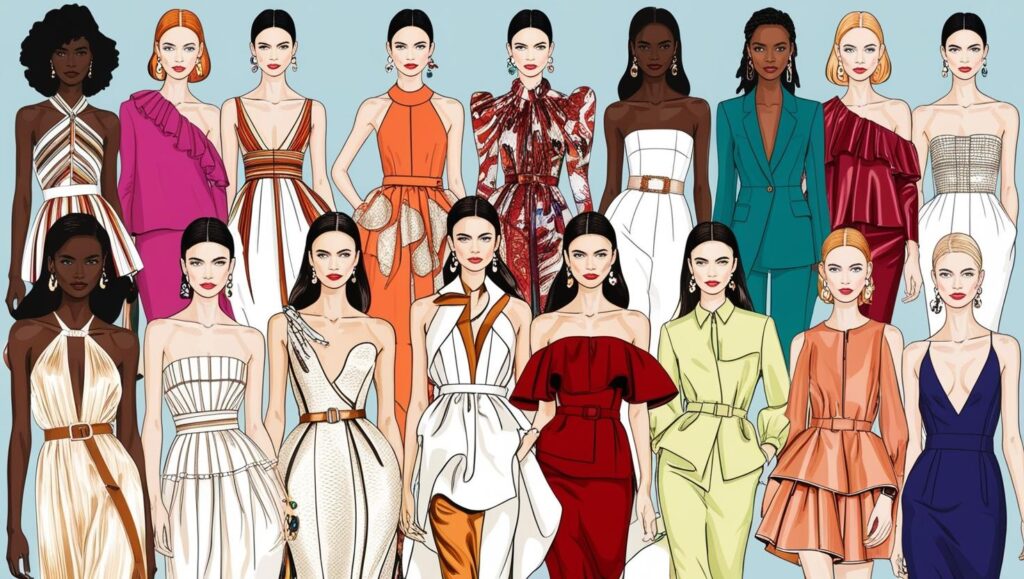Fashion illustration is the drawing of clothes, a language with which creative ideas come forth. Whether you aspire to be a designer or are at the threshold in learning through the One Year Foundation Certification in Fashion Design, certain basic elements about fashion illustration and model drawing one has to achieve. Let us take a small tour of its major techniques and equipment that can guide you along your way, nourishing and refining your aesthetic voice to expand further into designing.
Why is fashion illustration important?
Imagine some designer trying to conceptualize a certain revolutionary collection without the power of putting one’s idea onto paper. It is that bridge between imagination and reality that fashion illustration provides: designers communicating their vision prior to production. In fact, drawing skills play an important role at every stage in the design process-from making initial sketches right through to detailing garments.
But beyond design, fashion illustration is an art form in and of itself that has been developed over many, many centuries. Though digital tools opened up a lot of possibilities, traditional hand-drawn sketches remain very much an industry staple. Be it drawing with pencils, markers, or computer software, perfecting your drawing skills will indeed set you apart in the competitive world of fashion.
Understanding Fashion Model Proportions
Before designing any garment, you first need a canvas, which is a well-proportioned fashion figure. As opposed to usual human anatomy, fashion models are usually drawn to have long limbs and an exaggerated pose to denote elegance and movement.
9-Head Rule: This is done in practice to divide fashion figures into nine heads with the purpose of achieving an illusion of height and grace. It is helpful in having symmetrical guidelines on paper whenever doing some sketching.
Balance: The center line of the body is supposed to be according to the weight distribution of the figure. It’s the ability to master the standing, walking and dynamic pose that give flow to your illustrations.
Facial Features and Expressions: Although fashion is all about clothes, subtle facial features and hairdos bring life to your fashion illustrations.

Fashion Illustration Tools
Now, to get you into fashion illustration, there is a set of tools required, either with traditional or digital media. Here it is for both:
Pencils: HB, 2B, 4B, fineliners, colored markers;
Paper quality: smooth-sketch pads for working with a pencil, marker paper for bright and vibrant work.
In case you want to do a digital sketch, then this can be created in Adobe Illustrator, Procreate, or CorelDRAW.
The depth and texture that can be added by watercolors, Copic markers, or colored pencils would add so much.
Experimenting with various tools will help you stumble upon your illustration style, which is part of a designer’s personal branding.
Texturing and Adding Movement to Clothing
Fashion illustration is not just about drawing. Fabric texture, fold, and how the fabric would drape according to movement would create a more realistic sense of how garments and movement work.
Showing Fabrics: Light, airy fabrics like chiffon need soft, fluid lines, while structured textiles like denim require defined unbending strokes.
Shading and Highlights: Developing a sense of volume with various ways of creating shades adds depths to your fashion figures and showcases clothing in greater perspective.
Fashion Drawing Movement: Flowing skirt edges, rustled skirts, wind-blown figures-all show great dynamism on your pages filled with fashion figure drawings.
Conclusion
Be it for a One Year Foundation Certification in Fashion Design or self-learning, practice is the only key. You may attend workshops, go through the works of great fashion illustrators for inspiration, and get feedback from mentors that help you improve your skill.
Fashion illustration is one of those very important skills which give life to an idea, and model drawing can be mastered through dedication and imagination in order to introduce your own exclusive fashion ideas.


